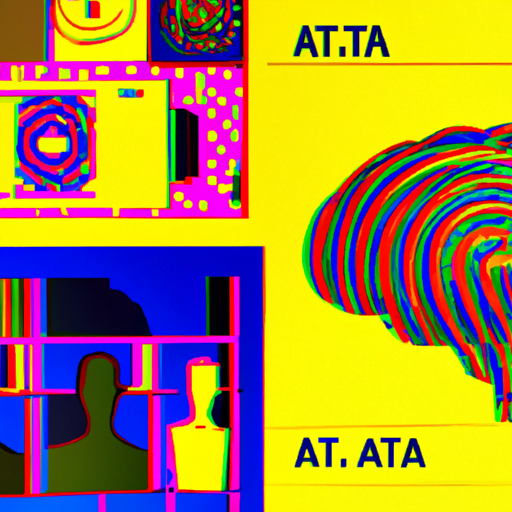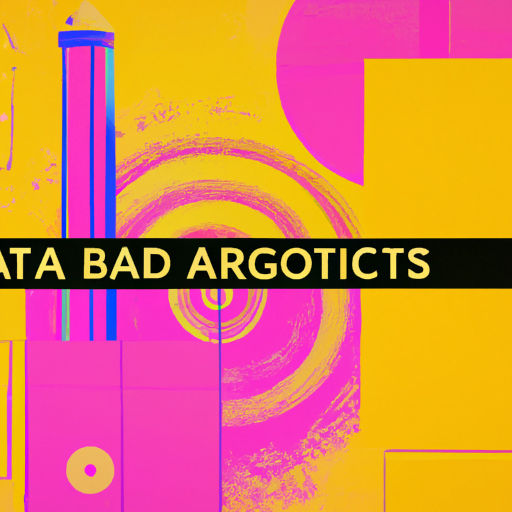
-
Table of Contents
- Visualizing Big Data: AI’s Contribution to Information Design
- The Power of Visualizing Big Data
- The Role of AI in Information Design
- 1. Automated Data Analysis
- 2. Intelligent Data Visualization
- 3. Real-time Data Visualization
- 4. Natural Language Processing
- Case Studies: AI in Information Design
- 1. Netflix’s Recommendation System
- 2. Google’s Data Studio
- 3. IBM’s Watson Analytics
- The Impact of AI in Various Industries
- 1. Healthcare
- 2. Finance
- 3. Transportation
- Summary
Visualizing Big Data: AI’s Contribution to Information Design

Big data has become an integral part of our lives, with vast amounts of information being generated every second. However, the challenge lies in making sense of this data and extracting valuable insights from it. This is where information design plays a crucial role. By visualizing big data in a meaningful and understandable way, information designers can help individuals and organizations make informed decisions. With the advent of artificial intelligence (AI), the field of information design has witnessed significant advancements. In this article, we will explore how AI is revolutionizing the visualization of big data and its impact on various industries.
The Power of Visualizing Big Data
Humans are visual creatures, and our brains are wired to process visual information more efficiently than text or numbers. Visualizing big data allows us to comprehend complex patterns, relationships, and trends that would otherwise be difficult to grasp. By presenting data visually, we can identify outliers, spot correlations, and gain insights that can drive innovation and decision-making.
Traditionally, information designers have relied on charts, graphs, and infographics to present data visually. While these methods have been effective to some extent, they often fall short when dealing with massive amounts of data. This is where AI comes into play.
The Role of AI in Information Design
Artificial intelligence has revolutionized the way we process and analyze data. Machine learning algorithms can now handle vast amounts of data and extract meaningful patterns and insights. When combined with information design techniques, AI can create visually stunning and highly informative data visualizations.
Here are some ways AI is contributing to information design:
1. Automated Data Analysis
AI algorithms can analyze large datasets and identify patterns and trends automatically. This eliminates the need for manual data analysis, saving time and effort. By automating the analysis process, information designers can focus on creating compelling visualizations that effectively communicate the insights derived from the data.
2. Intelligent Data Visualization
AI-powered tools can generate data visualizations that adapt to the specific needs of the user. These tools can analyze the data and choose the most appropriate visualization technique to represent the information effectively. For example, if the data contains geographical information, the tool might generate a map-based visualization. This level of intelligence ensures that the visualizations are tailored to the audience and maximize the impact of the data.
3. Real-time Data Visualization
With the help of AI, information designers can create real-time data visualizations that update dynamically as new data is generated. This is particularly useful in industries such as finance, healthcare, and transportation, where up-to-date information is crucial for decision-making. Real-time visualizations enable stakeholders to monitor trends and make timely interventions when necessary.
4. Natural Language Processing
Natural language processing (NLP) is a branch of AI that focuses on understanding and interpreting human language. By incorporating NLP techniques into information design, AI can analyze textual data and generate visualizations that summarize the information effectively. For example, AI-powered tools can analyze customer reviews and generate sentiment analysis visualizations, helping businesses understand customer feedback at a glance.
Case Studies: AI in Information Design
Let’s explore some real-world examples of how AI is transforming information design:
1. Netflix’s Recommendation System
Netflix, the popular streaming platform, uses AI algorithms to analyze user data and provide personalized recommendations. By visualizing user preferences and viewing habits, Netflix can suggest relevant content to its users. The visualizations help users discover new shows and movies based on their interests, leading to increased user engagement and satisfaction.
2. Google’s Data Studio
Google’s Data Studio is a powerful data visualization tool that leverages AI to create interactive and customizable dashboards. The tool can connect to various data sources, analyze the data, and generate visualizations that can be shared and embedded across different platforms. With AI-driven features like automatic chart suggestions and data exploration, Data Studio simplifies the process of creating visually appealing and informative data visualizations.
3. IBM’s Watson Analytics
IBM’s Watson Analytics is an AI-powered platform that enables users to explore and visualize data without the need for complex coding or data analysis skills. The platform uses natural language processing to understand user queries and generates visualizations that answer the questions effectively. Watson Analytics empowers users to make data-driven decisions by providing them with interactive and easy-to-understand visualizations.
The Impact of AI in Various Industries
The integration of AI and information design has had a profound impact on various industries:
1. Healthcare
In the healthcare industry, AI-powered visualizations have improved patient care and decision-making. By analyzing medical records, AI algorithms can identify patterns and predict disease outcomes. Visualizations help healthcare professionals understand complex medical data and make accurate diagnoses. Additionally, real-time visualizations enable healthcare providers to monitor patient vitals and intervene promptly when necessary.
2. Finance
In the finance industry, AI-driven visualizations have transformed the way financial data is analyzed and presented. Real-time visualizations help traders monitor market trends and make informed investment decisions. AI algorithms can analyze vast amounts of financial data and generate visualizations that highlight patterns and anomalies. These visualizations enable financial institutions to identify risks, detect fraud, and optimize their operations.
3. Transportation
The transportation industry has benefited greatly from AI-powered visualizations. Real-time visualizations of traffic data help city planners optimize traffic flow and reduce congestion. AI algorithms can analyze data from various sources, such as GPS devices and traffic cameras, to generate visualizations that provide insights into traffic patterns and predict future congestion. This information allows transportation authorities to make data-driven decisions and improve the efficiency of transportation systems.
Summary
AI has revolutionized the field of information design by enabling the visualization of big data in a meaningful and understandable way. By automating data analysis, generating intelligent visualizations, and incorporating natural language processing, AI has enhanced the effectiveness and impact of data visualizations. Real-world examples from companies like Netflix, Google, and IBM demonstrate the power of AI in information design. The integration of AI and information design has had a significant impact on industries such as healthcare, finance, and transportation, improving decision-making and driving innovation. As big data continues to grow, AI will play an increasingly important role in helping us make sense of the vast amounts of information available to us.
